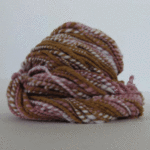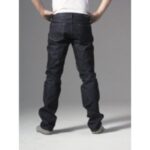Wondering what size you really should be? Well, your ideal body and weight are closely related to your body fat levels. To gauge what size suits you, start by learning about how body fat levels are measured and used. These measurements can help alert you to possible health problems, such as heart disease and diabetes. They can also tell you if you’re weight lies within a healthy range. So, read on to familiarize yourself with these measurement methods. Discover the best technique out there. Determine if you’re in the right pair of jeans!
The Tummy Timeline
BMI Basics: The Body Mass Index is useful as a ballpark measurement. Health professionals and organizations like the WHO, employ it to gain a basic idea of whether a person is overweight, underweight, or is at a healthy weight, given their height. If you’re my age (which I’m not about to disclose,) you were probably introduced to the BMI in Middle School during PE. Back then I was taught to measure my BMI with a simple formula. A few punches on the calculator and voila, my body fat was quantified.
How it works: To calculate your BMI, divide your weight in pounds by your height in inches squared. Alternately, calculate your weight in kilograms and divide it by your height in meters squared. Here’s a BMI calculator from the National Institutes of Health that will compute it for you. Once you have that number, simply compare your score with the BMI ranges. A score of about 18.5-25 is considered healthy, by US standards.
BMI Takes a Backseat: While the BMI is easy to implement, its accuracy and ranges are debated upon. Due to different body frames, Japan, for example, utilizes different BMI ranges. More importantly, the BMI fails to account for some circumstances that skew its numbers. Below are two examples that illustrate this.
Fat Thin-Folks: Thin folks who are sedentary and have an unhealthy level of fat can come out with a decent BMI. How? Well, the BMI doesn’t take into account that part of the “healthy body weight” is actually stemming from high fat levels, not muscle mass. The elderly who have lost muscle mass can also come up with misleading numbers. Age, an important element, is not always factored in.
Fit Mistaken for Fat: Meanwhile, athletes who weigh more due to muscle mass can score an unhealthy BMI. In these cases, the BMI misses the fact that the weight comes from muscle mass, not fat. (Check out the following study cited within The American College of Sports and Medicine’s official journal). In short, the BMI isn’t always representative of physical conditions (according to NIH) and is not an optimal predictor of health risks.
Sentenced by the Pincher: As I grew older, the BMI method was put aside due to the emergence of a new gadget: the fat pincher. The pincher, technically referred to as skinfold caliper, is often used by fitness fans. You’ve seen it. When you enroll at a gym, trainers often surprise you with it. Depending how out of shape you are, the pincher grabs onto small or large folds of fat. Then it sentences you to sit ups.
How it works: If you want to get pinched properly, here’s the lowdown. The skinfold caliper should be used on at least three different sites. Typical areas chosen for men include 1) chest 2) triceps and 3) thighs. Measurements on women are taken from 1) the side of the waist,above the iliac bone 2) triceps and 3) thighs. In my experience it has been useful when I’ve undergone fitness programs. My trainer employed it to monitor changes in my measurements as I progressed. Here is a skinfold caliper calculator, if you’re interested in this method. The site offers diagrams of “pinchable” spots too.
Fat Pincher Flunks: While the skinfold caliper has its uses, it has serious flaws. The main reason is that there are a myriad of formulas that can be used to get your body fat levels. All of them try to correct shortcomings that arise from variables like age and gender. Since there isn’t one particular standard, doctors and scientists aren’t partial to this method.
In an article written by doctors from Columbia University’s St. Luke’s Hospital, they state that the validity of this test depends largely upon the skill of the person performing it. Apparently, measuring fat isn’t as easy as it seems. In addition to this, they explain that the test can be inconsistent with populations that are not white.
Finally, while the skinfold caliper measures different parts of your body, results can be misleading, because our bodies are unique when it comes to fat distribution. For example, two people who are measured with a skinfold caliper may have nearly identical measurements, but extremely different bodies (see link). One of them could have large deposits of fat in areas that go “un-pinched.”
Hips get Hip: I recently went to see a nutritionist and left a bit surprised. What with my trainer pinching me about, I expected to see a skinfold caliper in all its glory, only to be confronted with…a tape measure. The dietitian used this simple tool to calculate what is called a “waist-hip ratio.” This method focuses on how the fat around your middle relates to the rest of your body. As it turns out, it’s the bulge around your belly that should be of greatest concern. Where our fat is located is just as important as how much there is.
Dr. Rob Hicks, an expert at St. Mary’s Hospital in London, explains in his article (written for the BBC) that scientists have linked abdominal fat to these illnesses. This is one of the main reasons he believes this ratio is the best predictor for heart attacks, diabetes and is an ideal indicator of obesity. It is not surprising that doctors highly support this method at present. The great part: it’s easy to compute!
How it works: All you need is a tape measure. First measure your waist by placing the tape measure just above the belly button. To measure your hips place the tape measure around the height of your mid-glute. Then simply divide the number you got from your tummy by the number you get for your hips. Here is an online waist-hip calculator you can use.
Ways to Use this Info: Use the hip-waist ratio to determine if you’re at risk for developing heart disease, or diabetes. If you’re within range and are aiming to improve your fitness level, consider skinfold caliper measurements. Track changes in your body as you get stronger! It can be a motivational tool.
Your Ideal Body in a Cinch
Ladies, here are some criteria my friends agree with when it comes to the perfect size. Aside from being one that places your weight within range, the perfect size and body should enable you to a) stow away your own carry-on luggage, b) chase down a cab and c) dance away in your favorite dress… all without a caliper care in the world.



